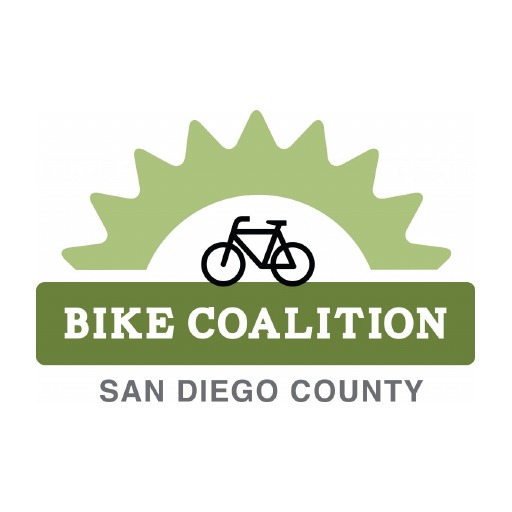Sections
You can find website help here.
What do I tell non-cyclists who believe bikes don't belong on public roads because they don't pay gasoline taxes?
The truth is gasoline taxes at state and federal level are not “user fees”. They are not sufficient to fund road building and maintenance and are not used exclusively for that purpose. The League of American Bicyclists has published an excellent article on this subject titled: “Who pays for our roads? We all do.” The piece is located at bikeleague.org. There is also a link in the article to a downloadable comprehensive document, “Do Roads Pay for Themselves” by US PRIG, which deals with this subject.
Where can I get a San Diego Regional bike map?
- Send an email to info@sdbikecoalition.org with your mailing address or call 858-248-0664 to request a bike map from the Coalition.
- Download a Digital Version: The bike map is also available as a pdf file. You can download it at www.sandag.org/bikemap
Where do I go to find out what bicycle-related events are occurring in San Diego?
The Bike Coalition maintains an Event Calendar which will list not only our events, but all cycling evens in the area that we know about.
I'll be in San Diego - where should I ride?
For riding advice, if you have some time before you come to San Diego, we recommend you get your hands on a copy of ‘Cycling San Diego’ by Nelson Copp and Jerry Schad (ISBN-10: 0932653529). It’s available on Amazon and other online book retailers. If you’re short of time, there are some good online resources, including our favorite local site www.efgh.com/bike. This site outlines many good rides in San Diego, along with information about clubs. If you’re in town right now and are looking for the best riding, here are a few suggestions –
- 5-15 miles, slow speed light traffic – try Mission Bay or Coronado. Both have lovely bike paths (and good ice cream shops!)
- 20-30 miles – Bayshore Bikeway around San Diego Bay includes the Silver Strand, the most popular bike path in the area. San Luis Rey River bike path in Oceanside is another good option for a medium length bike path ride. If you’re looking for more miles, great scenery and don’t mind a little traffic, the North Coast route from Torrey Pines/Del Mar up to Oceanside along old Hwy 101 is very popular.
- 30+ miles – North and east county offer some great loop routes that are scenic, hilly, a good workout, and have great weather all year round. A little hot in the summer (start earlier the further east you are from the coast) and beautiful in the winter, try routes around Poway, Ramona, Julian, Alpine, Rancho Santa Fe, Valley Center, and Mount Palomar.
- Mountain Biking – sdmba.com has a great set of trail maps, resources, and ride descriptions. Premier mountain bike sites include Noble Canyon and Mission Trails Regional Park.
I'll be in San Diego - where can I rent a bike?
Some shops to try:
- Holland’s Bicycles (hollandsbicycles.com)
- CheapRentals (www.cheap-rentals.com)
- Cycle Quest (www.cyclequestsd.com)
- Stay Classy (stayclassybikes.com)
- Pacific Beach Bike Shop (Pacific Beach Bike Shop
- EZE Ryders (ezeryders.com)
I've been in a bike crash - what should I do now?
Thanks to Richard Duquette, local bike lawyer (www.911law.com), for this list of what to do:
- REQUEST A POLICE REPORT: Don’t settle for “we don’t take reports”.
- DOCUMENT ALL WITNESSES: Get the names, addresses and telephone numbers of all witnesses. This includes preserving all evidence, damaged car and cycle parts.
- SEEK IMMEDIATE MEDICAL ATTENTION: This helps prove you were hit and what your damages are. Be very careful as to what you tell medical staff.
- TAKE PHOTOGRAPHS: …of your bruises, cuts, property damage (car, bike, clothes), the scene/signs, markings, and skid marks. City Streets Change!
- AUTO INSURANCE COVERAGE: A special note for bicyclists: if you are hit while cycling, you may be able to recover personal injury damages from your own auto insurance policy under the motorist provision. Remember Proposition 213 limits your rights to collect uninsured only economic damages (lost wages, medical bills, car repair) if you are an uninsured or an excluded driver. So to maximize your recovery, maintain insurance coverage.
- INSURANCE ADJUSTERS: When an insurance adjuster calls you, tell him or her to contact your lawyer. Do Not Let Them Tape Record You!
- PROPERTY DAMAGE: Photographs and written estimates of your damages from a reputable auto repair company helps.
- MEDICAL BILLS AND RECORDS: The thing to remember here is to explain to the doctor your complaints, starting from head to toe, including past injuries to the same body parts that are presently injured.
- LOST WAGES: These may be dependent on your injury – medical documentation. In other words, the insurance adjuster may ask; “If you are not injured, why are you unable to work?” Have your doctor verify your non-ability to work in the form of temporary disability slip which will be your proof.
- LIFESTYLE CHANGE: Here, I learn how the injury has affected my client’s life, family, job, and recreation and how it will do so in the future. Photographs of trophies or medal, if you are an athlete, or the family, people in off road vehicles, all help to prove general damages. Keep a diary of your athletic training and mileage before and after injury.
Can I ride on the sidewalk?
- Each city in the county regulates sidewalk riding slightly differently. Here’s a brief rundown:
- Bicycle riding allowed on sidewalks, except in business districts: Oceanside, Encinitas, San Diego, National City, Chula Vista, Imperial Beach, Lemon Grove, Santee, and unincorporated San Diego County.
- Bicycle riding on sidewalks forbidden at all times: Carlsbad, El Cajon, Vista, Poway
- Riding on sidewalks regulated but not forbidden: Escondido, San Marcos
- Riding on sidewalks not allowed if there is an adjacent bike lane or bike path: Solana Beach
- Not regulated: La Mesa
- Riding in parks prohibited: Del Mar
Where can I donate a used bike?
If the bike is in good working condition, you can donate it with your other household donations to the local organizations of your choice – Salvation Army, Father Joe’s, Amvets, etc. If you have a broken bike or bike parts to donate, consider donating to Bikes del Pueblo.
How can I get a stoplight to see me?
Something you might want to know is that the signals aren’t triggered by weight, but by an electrical current induced in the metal of your bike. If you have metal wheels or a metal frame, the signal should detect you, but you have to be in just the right place for it to realize you are there. In the pavement you might be able to see the cuts where the city laid wires into the street. If the wires are in a circle, you are most likely to be detected if you are sitting on the edge of the circle. If it has diagonal cuts across the circle or square, you’re most likely to be detected in the center of the shape. A good phrase to remember is “Tires to the Wires,” actually placing your tires on the lines created by the buried wires. The signal should be able to detect you if you’re anywhere in the travel area, but sometimes the city doesn’t want to set the sensitivity too high since it tends to pick up the traffic in the adjoining lane.
Some intersections have video detectors instead of sensors in the road. They detect a change in the image at a specific location in the travel lane due to the presence of a vehicle. To maximize your probability of detection, stop your bike in the center of the travel lane . It might also help to flash your headlight at the detector.
If the light still does not change, treat it as a malfunctioning traffic signal. Provided that you stopped in the first place, and have sat there through what should be a cycle or so and the light hasn’t picked you out and changed for you, yield to any crossing traffic and proceed on the red, just like you would for a stop sign. Bear in mind that the light might be functioning for other traffic, so be very cautious.
If you’re stopping in the right spot and the signal still doesn’t detect you, we can probably convince someone from the city to go out and take a look to see if the sensitivity can be raised. Contact the Street Division for the city the malfunctioning light resides in.

